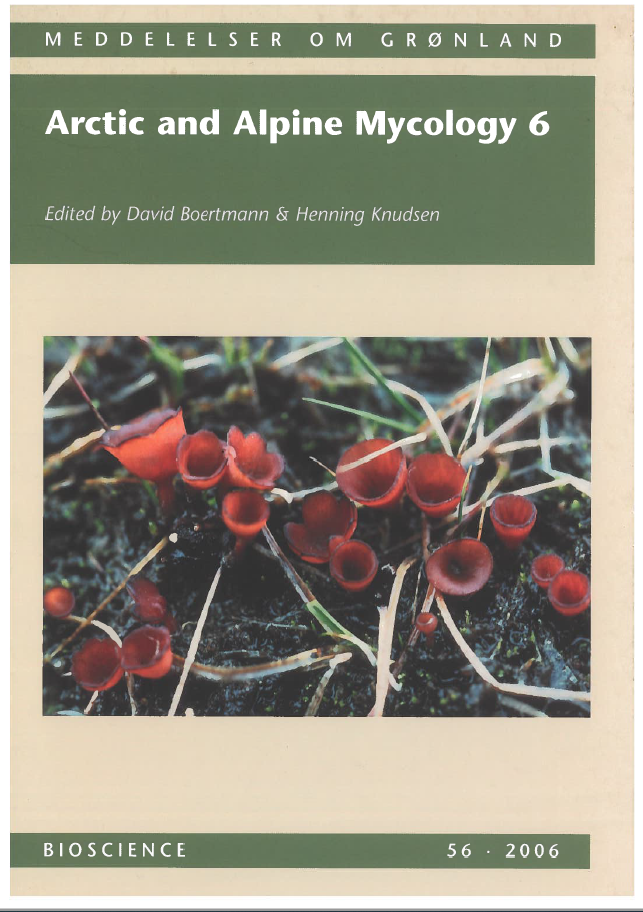Distribution of selected basidiomycetes in oceanic dwarf-scrub heaths in Paamiut area, low arctic South Greenland
DOI:
https://doi.org/10.7146/mogbiosci.v56.142867Abstract
The occurrence of 80 selected basidiomycetes (49 symbionts, 31 saprobionts) was investigated at seven sites in dwarf-scrub heaths in the Paamiut area (low arctic S Greenland). The sites are situated in the hyperoceanic zone (at the outer coast), in the oceanic zone (about 10-25 km from the outer coast) and in the suboceanic zone (more than 25 km from the outer coast). The number of species is larger in the oceanic than in the hyperoceanic zone, and there is a tendency for the proportion of symbionts to increase from the hyperoceanic zone and away from the coast. The total number of species indicates that the increase of symbionts in the oceanic zone is due to the larger number of Cortinarius and Russula species. Moreover, larger symbionts tend to dominate away from the coast. Observations from Paamiut peninsula (hyperoceanic zone) indicate that the number of saprobiontic species exceed the symbionts in the areas very close (< 3 km) to the ocean.
Four distributional groups can be segregated based on the distributions in the Paamiut area.
A: species most frequent in the hyperoceanic zone (nine symbionts and fourteen saprobionts),
B: indifferent species (nine symbionts and five saprobionts),
C: species most numerous and frequent in the oceanic zone (twenty-four symbionts and six saprobionts) and
D: species most frequent in the suboceanic zone (two saprobionts).
Cortinarius imbutus, Entolomafernandae and Pholiota scamba are new to the low arctic region.

Downloads
Published
Issue
Section
License
Coypyright by the authors and the Commision for Scientific Research in Greenland / Danish Polar Center/Museum Tusculanum Press as indicated in the individual volumes. No parts of the publications may be reproduced in any form without the written permission by the copyright owners.

